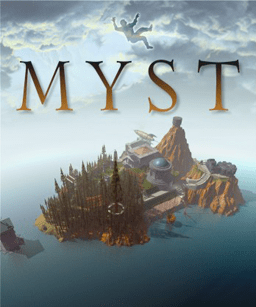Technology Quest: Let the Games Begin

Okay, I have a confession to make before we actually let the games begin. I am not a gamer. I smile politely and fain unwavering interest when my son Nathan shares the intricacies of characters, plots, and imaginary worlds that wink and blink from his computer. I try, a little, to keep up with the open world survival game conversation of Minecraft, and express joy (which is real, I swear!) when successes such as upgrades from huts to castles are accomplished. I am a mom, what can I say. I am a teacher, too, and it is through this lens, more specifically a literacy lens, that technology and gaming has actually become meaningful to me. So, with admissions behind me, let’s try this again: Let the Games Begin.
Summer is waning and it is in these diminishing days of August that, I, like many educators, am thinking more mindfully about the upcoming academic year. A good portion of my thoughts, ideas and directions for next year have been informed and inspired by various articles, books, blogs and videos I have had the opportunity to read this summer. One such reading, by Mariana Haynes, was shared with me by Brad Neuenhaus, one of our founding partners here at Keys to Literacy. Haynes wrote the The Next Chapter: Supporting Literacy within ESEA and begins her post by noting that “60% of both fourth and eighth graders currently struggle with reading.” This troubling stat guided me to consider the ramifications of such data, particularly with writing. Joan Sedita, also a founding partner at Keys to Literacy, notes in Keys to Writing Content (Sedita, et al, 2013) that “Along with reading comprehension, writing skill is a strong predictor of academic achievement and essential for success in the workforce and post-secondary education.” These voices remind me that reading and writing are inextricably connected and help create a future for our learners. Another read that caught my eye this summer was a technology blog in Teach in which a guest post by Karen Larson and Gene Tognetti surfaced the following questions:
How do I, a third grade teacher, create opportunities in my classroom that will ultimately lead to ‘college and career’ readiness? How do I teach students so the outcomes are truly learned?”
I was intrigued by the blog but, more so, by these focused questions, which in turn led me to my own query: “What conditions can be created in a classroom that engage learners, invite intrigue and encourage reading and creative writing?” Enter the notion of gaming.
Remember, I am not a gamer but this whole idea of gaming and learning has actually been brewing in me for quite some time. Several years ago I had the opportunity to be part of the faculty at the Future of Learning Summer Institute at Harvard University and met Barry Fishman. His research at the University of Michigan and applications of technology and their classroom implications, specifically gaming, were quite inspiring. It wasn’t, however, until this summer when I viewed a video review of Tim Ryland’s teaching techniques as a literacy tool in the classroom that I really started to get excited. Mr. Ryland created conditions in his classroom that were immersive, and inspired even the most reluctant writers. He used technology, more specifically the computer game Myst, to draw in learners and create a literacy context in which students walked through amazing panoramic landscapes and were invited to see, hear, and describe everything around them. It encouraged students to be more descriptive, particularly in narrative writing. Technology is, indeed, a powerful gateway to learning and gaming can be one such tool to engage and invite learners.
Keys to Literacy recently co-sponsored, along with The Southeastern Regional Educational Service Center (SERESC), an adolescent literacy conference in New Hampshire. It was here that participants were treated to Sara Casassa’s workshop using technology to support her ELA curriculum. She offered a number of technological resources that invited and supported reading and writing, many of which can be found on her blog page. Whether you find it exciting or disconcerting, we live in a world where technology is constantly changing and shaping our thinking, ideas and classroom experiences. Whether gaming, or using the myriad of tech supports a teacher-extraordinaire such as Sara Casassa offers students, we have a unique opportunity to create conditions for learners to become readers and writers, gamers and poets, astronauts and artists.
A new year approaches. A new quest to create conditions for learners to think and learn, read and write awaits us. Let the games begin!

 Sandra's career as an educator began in a secondary social studies classroom in Winchester, MA. She has served as a school-wide Student Learning Specialist with a reading focus and a middle and high school Instructional Coach and Core Lead. In addition to being a Keys to Literacy Trainer, Sandra is a consultant, online instructor, and coach for WIDE World and Professional Education Online (PEO) at the Harvard University Graduate School of Education. She is also a faculty member at Harvard's Project Zero Classroom summer institute.
Sandra's career as an educator began in a secondary social studies classroom in Winchester, MA. She has served as a school-wide Student Learning Specialist with a reading focus and a middle and high school Instructional Coach and Core Lead. In addition to being a Keys to Literacy Trainer, Sandra is a consultant, online instructor, and coach for WIDE World and Professional Education Online (PEO) at the Harvard University Graduate School of Education. She is also a faculty member at Harvard's Project Zero Classroom summer institute.
Leave a Reply